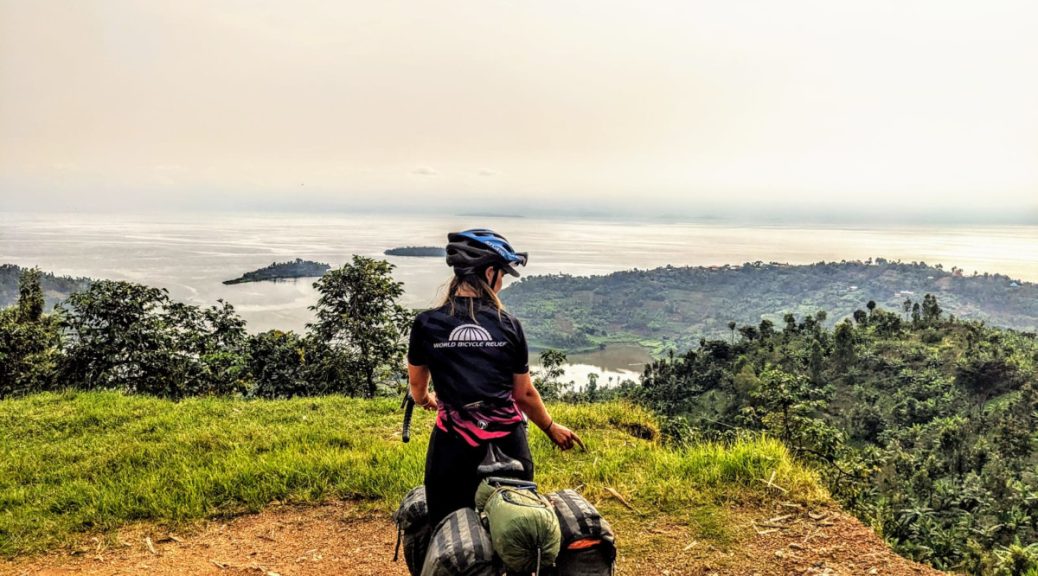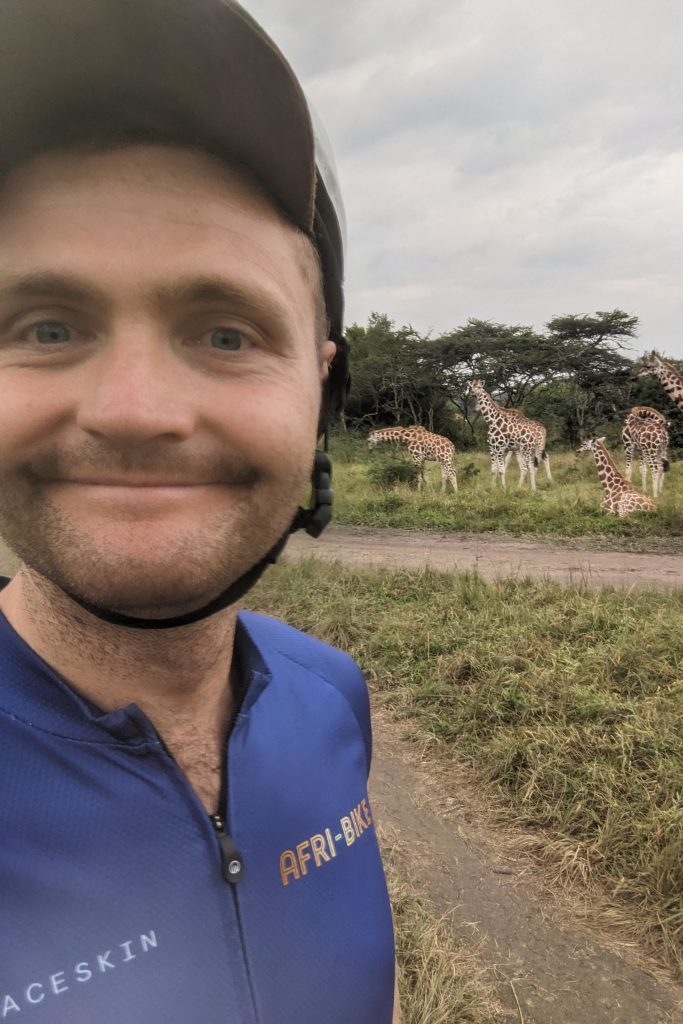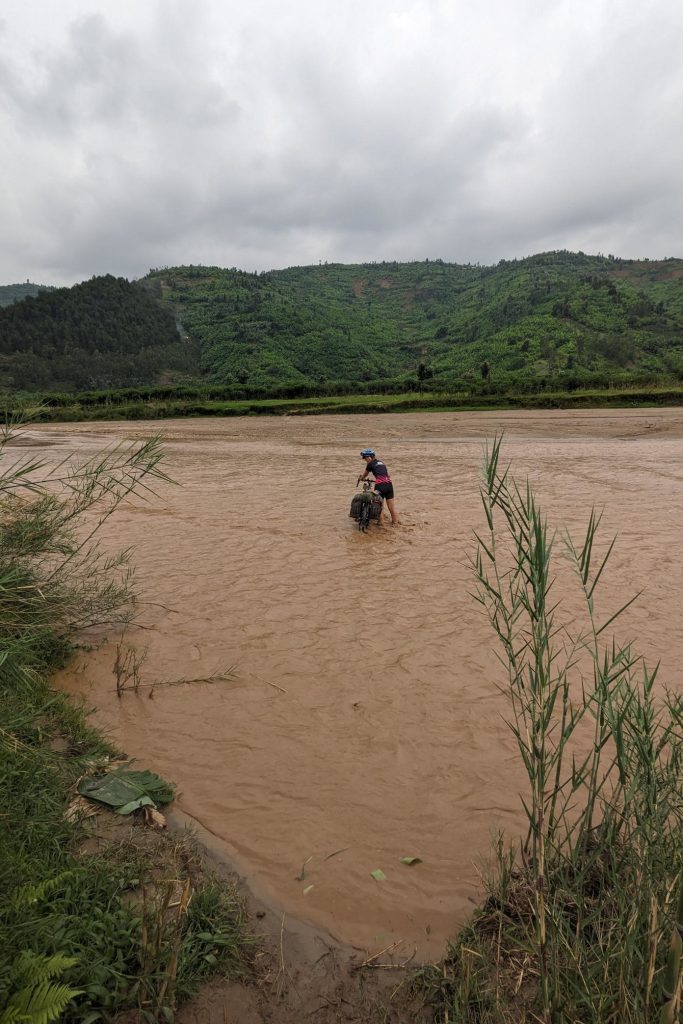Many overlanders travel between Kenya’s famed safari destinations and South Africa’s Mother City. But how many travellers do it on their own steam? Biba and Oliver Nias are doing just that and, as Afri-Bike, they are raising funds for World Bicycle Relief.
The picture on Instagram speaks volumes. Windblown hair, faces covered in dust, Biba and Oliver Nias are a world removed from their day to day in London. They are also exactly where they want to be: cycling from Kenya to South Africa. No day is the same and there are unforgettable experiences around every corner. Jumping with a Masai warrior, going on safari in Lake Nakuru National Park and trekking to see the gorillas in Bwindi Impenetrable National Park.
For some time, the couple had wanted to take a break from their City jobs in the UK. Biba, who was brought up in the Waterberg, had always wanted to see more of Africa. Oliver was keen to learn more about the continent where she’d grown up.
Then, in 2022, he attended a talk by Mark Beaumont, who holds the world record for cycling down the African continent (42 days and 8 hours). Mark highlighted the real possibility of covering vast distances by bike. Although Oliver and Biba had never ridden a bicycle for more than 50km together, their interest was piqued.
Covering a similar geography, albeit more slowly, would offer a break from their busy careers. But more than just a personal challenge, they were looking to do something meaningful. And so Afri-Bike was born, an expedition that is raising money for World Bicycle Relief. This charity puts rugged bikes into rural communities, helping kids get to school, health workers reach remote patients and farmers transport their goods to market.
The Afri-Bike expedition formally set off from Kenya on 24 January 2024. Tracks4Africa spoke to Oliver about their trip.
What is the route you are following?
Our route is non-linear and follows roads we think will provide us with a real opportunity to see interesting parts of Africa, both on and off the beaten track. Starting in Nairobi, the plan is to pass through Uganda, Rwanda, Tanzania, Malawi, Zambia, Botswana, Namibia and (finally) South Africa. Originally, we were using Google maps to plot our route. However, we quickly discovered that it was lacking in detail, only enabling us to make use of big (scary) main roads.
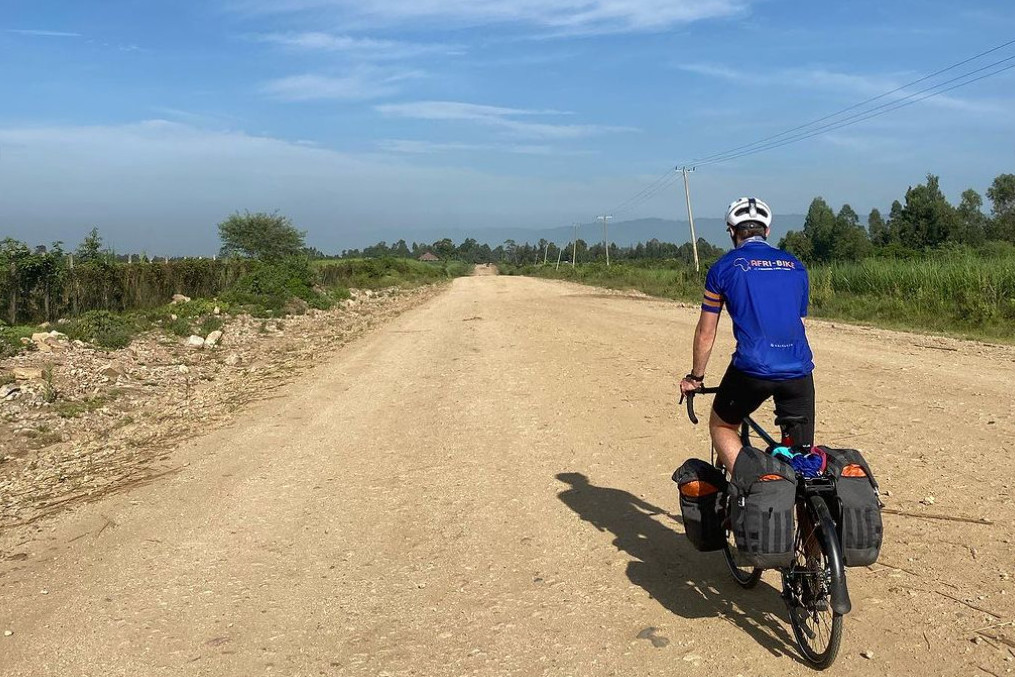
Having done some research into what tools you can use to explore hidden tracks and routes we came across Tracks4Africa. This has enabled us to enjoy quieter, scenic roads as well as interact with local people. They are inevitably fascinated by who we are, what we are doing and where we are going. Tracks4Africa has also enabled us to find more affordable accommodation and sites that are not overpopulated by hordes of tourists – adventuring at its best!
What do you carry on your bike?
The list of kit that we have on our bikes is relatively extensive and covers all matter of sins. It ranges from a tent and sleeping equipment through to spare bicycle parts, emergency medical kit and our “tool shed”. If we had to pick one item that we could not live without so far it would be the Leatherman multitool. It has been used for multiple things, ranging from fixing our bikes, peeling potatoes, opening fruit, and more. The other absolute essential is water! Africa is hot and we are drinking loads. And that’s even before we get to the Namib Desert!
What do you do for food?
So far we have tried to eat local as much as we can. Up to now, we have found that eating off the side of the road is brilliant. In the mornings, fruit, breads, rolex and samosas have been really delicious to try out. [A Ugandan favourite, a rolex consists of a vegetable omelette wrapped up in a chapati.] For lunch, freshly made chapatis have become a real staple. Dinner wise, to be honest it depends what we can get. We have eaten A LOT of goat and rice and in Uganda the locals love a banana-based dish called matoke. However, when we come across a Western establishment that offers pizza and pasta, we do tuck in. And when camping, we carry some of our own goodies. Pasta and tomato purée (largely because the puree in sachets is light) and super noodles.
Which type of roads are you finding the best?
We have been on the road for more than a month now and have completed over 1,000km. The first days have been amazing, albeit not without challenge. Some days are just out of this world, whereas others are very tough. We love cycling along roads less travelled by. However, there have been one or two occasions where it has taken us 4+ hours to cover short distances that we would expect to complete in one hour. This can be a little disheartening. But at the end of the day, once we’ve reached our goal, it’s mega rewarding to look back. When we reflect on where we’ve been and what we’ve done, we get fired up again.
The tricky dirt roads are also often the best. Whilst rocky, corrugated roads can be your enemy, they can also create memories. They also offer views that long, straight and flat tarmac stretches that bypass the best parts of the world simply can’t compete with! We only hope that our hands can hold up for the next 7,000km. The bruising from gripping the handle bars tightly when going over hundreds and hundreds of bumps in the road is something we are still getting used to…
What have been the highlights thus far?
What a question! The highlights so far are many and various but here are a few:
- Cycling through Lake Mburo National Park in Uganda (with an armed guide). We were the only people cycling through what is a small national park. Getting to see wildlife – hippos, zebra, giraffe, antelope and birds galore – in the open by bike was just incredible. Luckily we avoided any hairy leopard or buffalo encounters!
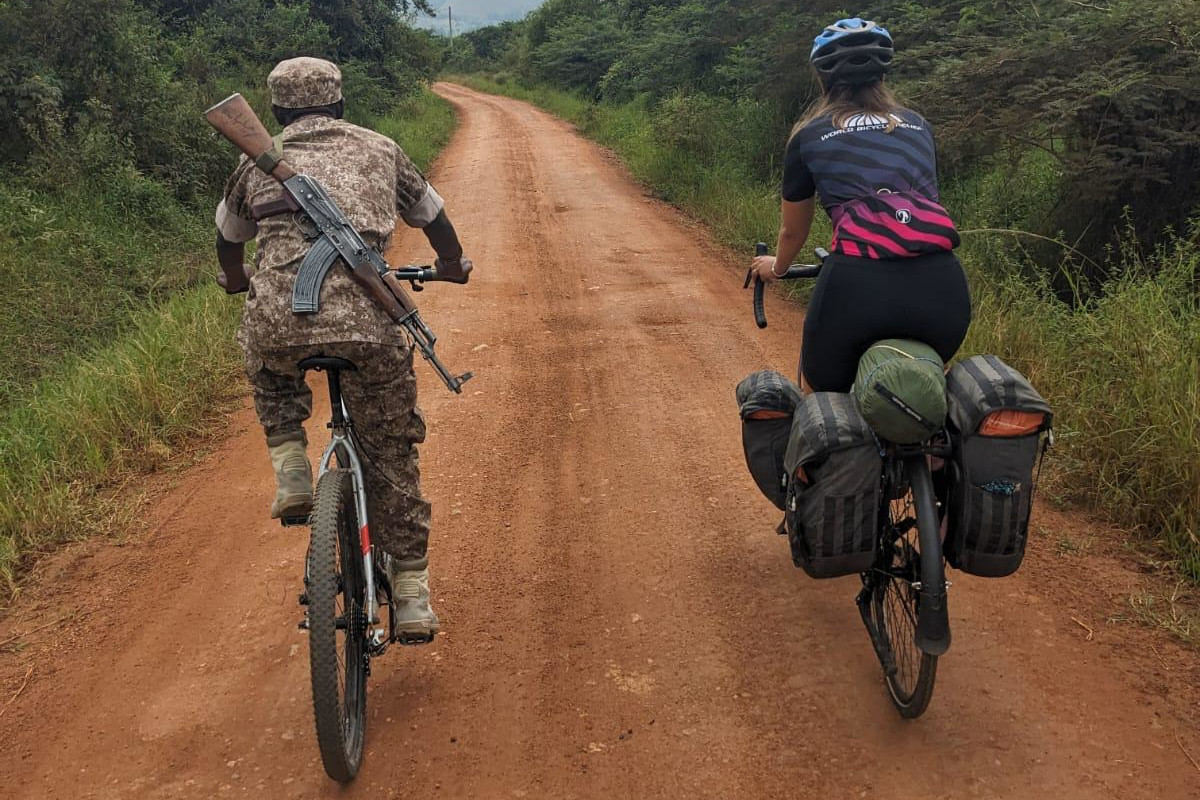
- Riding through the banana plantations in Ntungamo. We think we were the only mzungu (foreigners) that had passed down this dirt track in the last 10 years or so. Some of the people that we encountered had never seen Caucasian people before. The interactions that we had with them were some of the friendliest and most hospitable we have had.
- Our first night wild camping under the stars. The beautiful mountainous backdrop and the clear sky got even better when we stumbled across some locals. They provided us with a local stove (bucket filled with charcoal) so we could cook our supper!
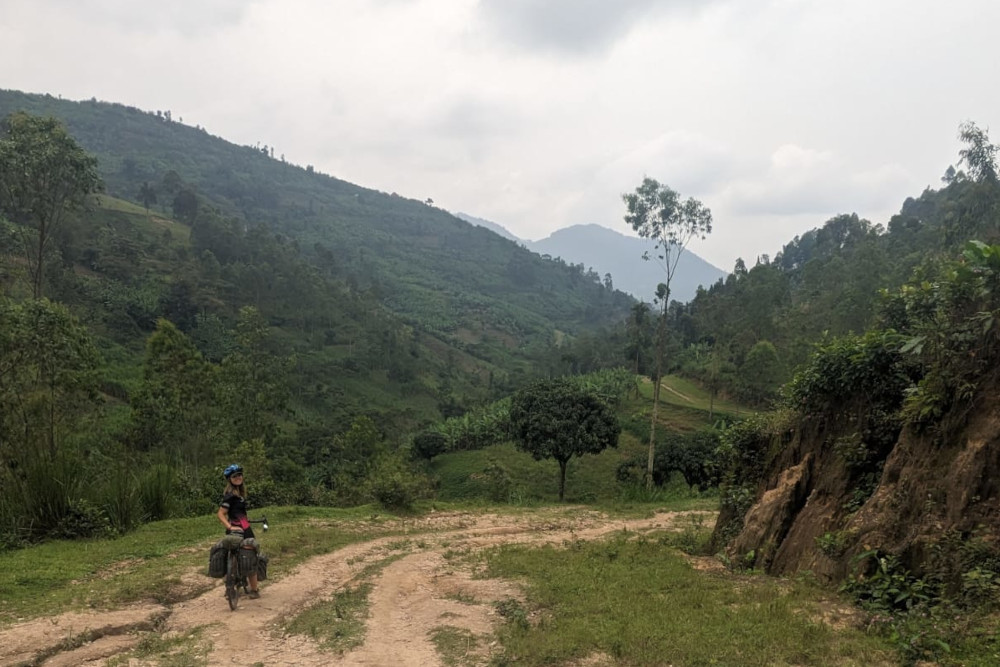
Looking ahead, we have no doubt that Africa will offer us many more rich experiences and interactions. In particular, we are both very excited to see some of the more volcanic landscapes in Rwanda and, of course, the Namibian desert.
Which tips do you have for other bikepackers?
At this point we are still learning so it would be too early to offer any genuine counsel. However, in terms of what has helped us find some of the best experiences, these guidelines are worth remembering:
- Be flexible and go with the flow. Fixed agendas don’t work that well when you are bikepacking. You don’t know what challenges you are going to encounter. Trying to fight a system that is different to what you are used to only works against you!
- Be constantly curious and interact with the locals and as many people as possible. One Ugandan we met summed the value of this up nicely. “Every day I meet someone and make a friend – it is a miracle! You can always learn something and create a special friendship.”
- Don’t try and go it on your own. If you need help or are worried about how to tackle a challenge – just ask!! The minds of many are much more powerful than one.
- And finally… the most direct route isn’t always the best. Take the road less travelled by.
What we have learned in the early part of our cycling trip is that no route is perfect or better than any other. Some days the route that you elect to follow is seamless, calm and scenic. On others it is less. We realise that our journey has to flex around the world as we encounter it. Taking ideas from lots of different travellers, locals and experts has enriched our experience.
We intend to spend five and a half months covering the 8,000km that make up our route. Whilst our route is not fixed we do have a fixed time frame – we need to be back for a very good friend’s wedding!
Follow Afri-Bike’s progress on Instagram: @biba_and_ollie
